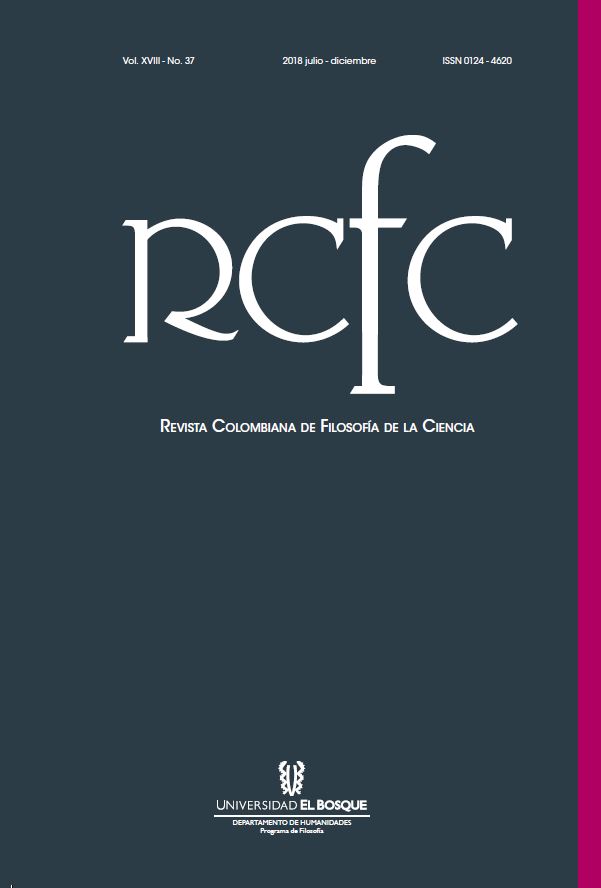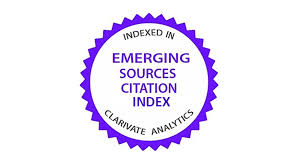From Genetic Profile to Genetic Portrait: Path Dependence in Forensic DNA Technologies
DOI:
https://doi.org/10.18270/rcfc.v18i37.2577Keywords:
contingency, forensic genetics, justice, technological determinismAbstract
This paper aims to show the relevance of history for explaining the development of forensic dna technologies and the standardization of their judicial use. Our description of the trajectory that the dna profile has followed, and of the epistemic tasks it has been assigned since 1984 to the present, allows us to characterize it as a historical entity with path dependence. We also reflect on the place that the novel technique of dna phenotyping occupies within this trajectory. In emphasizing the relevance of contingency in the path of forensic dna we take a position with respect to the relationship between history and philosophy of science, for inclusion of contingency as resource for explaining technoscientific developments means recognizing that they are dynamic processes in which sequences of events are causally related.
Downloads
References
Aronson, Jay D. Genetic Witness: Science, Law, and Controversy in the Making of DNA Profiling. New Brunswick: Rutgers University Press, 2007.
Butler, John M. Forensic DNA Typing: Biology, Technology, and Genetics of STR Markers. Amsterdam: Elsevier Academic Press, 2005.
Cole, Simon A. Suspect Identities: A History of Fingerprinting and Criminal Identification. Cambridge, Mass: Harvard University Press, 2002.
David, Paul A. "Path Dependence: A Foundational Concept for Historical Social Science". Cliometrica 1.2 (2007): 91-114.
Desjardins, Eric. "Reflections on Path Dependence and Irreversibility: Lessons from Evolutionary Biology". Philosophy of Science 78.5 (2011): 724-738.
Ereshefsky, Marc. "Species, Historicity, and Path Dependency". Philosophy of Science 81.5 (2014): 714-726.
Graham, Eleanor y Alison May. “DNA: An Overview”. A Guide to Forensic DNA Profiling. Eds. Jamieson, Allan y Scott Bader. West Sussex, Reino Unido: John Wiley & Sons, 2016. 9-27.
Lynch, Michael y Sheila Jasanoff. "Contested Identities: Science, Law and Forensic Practice". Social Studies of Science 28.6 (1998): 675-686.
Jobling, Mark A. y Peter Gill. "Encoded Evidence: DNA in Forensic Analysis". Nature Reviews Genetics 5.10 (2004): 739-751.
Lynch, Michael, Simon A. Cole, Ruth McNally y Kathleen Jordan. Truth Machine: The Contentious History of DNA Fingerprinting. Chicago y Londres: The University of Chicago Press, 2008.
Matheson, Susan. "DNA Phenotyping: Snapshot of a Criminal." Cell 166.5 (2016): 1061 1064.
Murphy, Erin. “Legal and Ethical Issues in Forensic DNA Phenotyping”. NYU School of Law, Public Law Research Paper No. 13-46 (2013): 1-36.
Norris, Robert J. Exonerated: A History of the Innocence Movement. New York: New York University Press, 2017.
NRC (National Research Council). The Evaluation of Forensic DNA Evidence. Washington DC: National Academy Press, 1996.
Parabon NanoLabs. “Assault on Brittani Marcell. Parabon Snapshot Case Summary”. Snapshot DNA Analysis. s.f. <https://snapshot.parabon-nanolabs.com/snapshot-case-summary--albuquerque-nm--brittani-marcell-assault.html>. Acceso 23 mayo 2018.
Parabon NanoLabs. “Murder of Adrienne ‘Sunny’ Sudweeks. Parabon Snapshot Case Summary”. Snapshot DNA Analysis. s.f. <https://snapshot.parabon-nanolabs.com/snapshot-case-summary--costa-mesa-ca--sunny-sudweeks-murder.html>. Acceso 23 mayo 2018.
Parabon NanoLabs. “Murder of Rhonda ‘Chantay’ Blankinship. Parabon Snapshot Case Summary”. Snapshot DNA Analysis. s.f. <https://snapshot.parabon-nanolabs.com/snapshot-case-summary--lake-brownwood-tx--chantay-blankinship-murder.html>. Acceso 23 mayo 2018.
Parabon NanoLabs. “Murder of Shaquana Marie Caldwell. Parabon Snapshot Case Summary”. Snapshot DNA Analysis. s.f. <https://snapshot.parabon-nanolabs.com/snapshot-case-summary--anne-arundel-county-md--shaquana-caldwell-murder.html>. Acceso 23 mayo 2018.
Parabon NanoLabs. “Parabon Snapshot. Advanced DNA Analysis”. Snapshot DNA Analysis. 2018. <https://snapshot.parabon-nanolabs.com/>. Acceso 23 mayo 2018.
Parabon NanoLabs. “Testimonials. Parabon Snapshot DNA Analysis Service”. Snapshot DNA Analysis. s.f. <https://snapshot.parabon-nanolabs.com/testimonials>. Acceso 23 mayo 2018.
Rabinow, Paul. Making PCR: A Story of Biotechnology. Chicago: The University of Chicago Press, 1996.
Wambaugh, Joseph. The Blooding. The True Story of the Narborough Village Murders. Nueva York: Morrow, 1989.
Wienroth, Matthias, Niels Morling y Robin Williams. “Technological Innovations in Forensic Genetics: Social, Legal and Ethical Aspects”. Recent Advances in DNA and Gene Sequence 8.2 (2014): 98-103.
Downloads
Published
How to Cite
Issue
Section

| Article metrics | |
|---|---|
| Abstract views | |
| Galley vies | |
| PDF Views | |
| HTML views | |
| Other views | |











